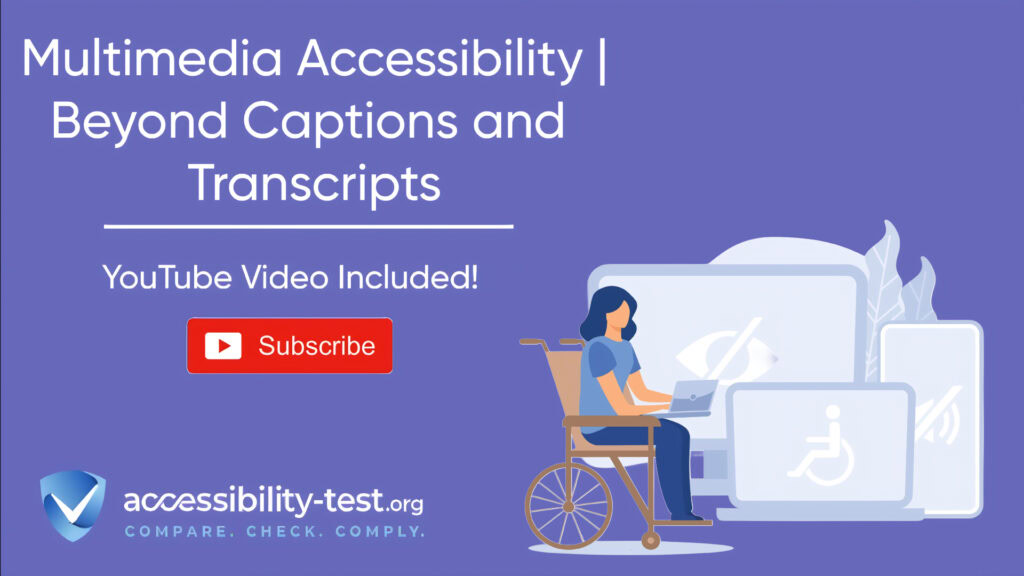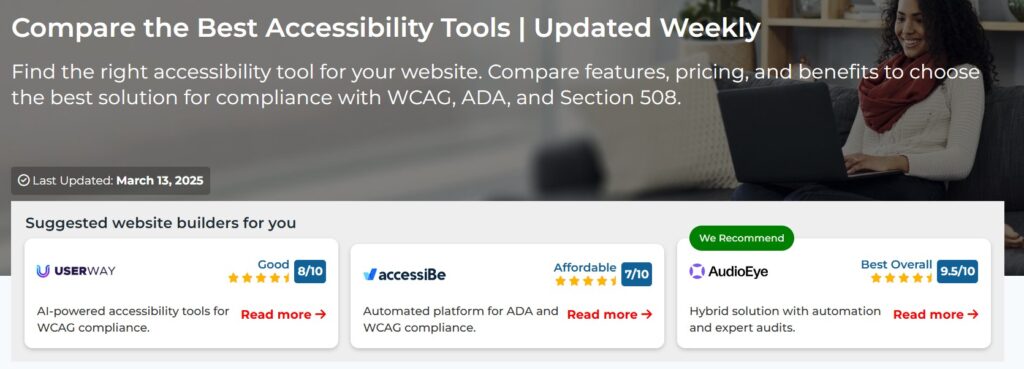
Multimedia Accessibility
Websites and digital platforms continue to rely more heavily on multimedia content, but many users face barriers when trying to access videos, audio files, and interactive media. While captions and transcripts form a solid foundation for accessibility, they’re just the starting point. This article dives into the additional elements needed to create truly accessible multimedia experiences—from audio descriptions that help blind users understand visual content to specialized media players that work with assistive technologies. You’ll discover practical ways to implement these features to make your digital content available to everyone, regardless of ability.
Essential Multimedia Accessibility Requirements
Creating accessible multimedia isn’t just about meeting legal requirements—it’s about ensuring all users can access and understand your content. WCAG (Web Content Accessibility Guidelines) 2.1 provides specific criteria for multimedia accessibility, with different requirements depending on whether you’re aiming for Level A, AA, or AAA compliance.
When planning your multimedia strategy, consider all potential barriers users might face:
- Deaf or hard of hearing users who need text alternatives for audio content
- Blind or low-vision users who need descriptions of visual information
- Users with mobility impairments who navigate using keyboard or voice commands
- People with cognitive disabilities who benefit from clear, structured content
Research shows that 60-70% of multimedia implementations have significant accessibility barriers. By addressing these gaps, you create better experiences for all users while reducing legal risk.
Captions vs. Subtitles | Understanding the Differences
Though often confused, captions and subtitles serve different purposes and user needs. Understanding these differences helps you implement the right solution for your content.
Captions provide text versions of audio content within a video, synchronized with the action on screen. They’re designed primarily for deaf and hard of hearing users. According to WebAIM, proper captions should:
- Include all spoken dialogue
- Identify who is speaking when speakers change
- Describe important sound effects, music, and emotional tones (e.g., [laughter], [tense music])
- Use correct punctuation and timing
- Stay synchronized with the corresponding audio
Subtitles, in contrast, provide translations of dialogue for users who understand the audio but not the language being spoken. Unlike captions, subtitles typically don’t include descriptions of non-speech audio elements like sound effects.
When implementing captions, you need to decide between:
- Closed captions: Can be turned on or off by the user
- Open captions: Permanently embedded in the video and cannot be turned off
For maximum accessibility, closed captions offer the best solution as they give users control over their experience. When creating captions for educational content, pay special attention to academic terms, equations, and technical language that might be difficult to transcribe accurately.
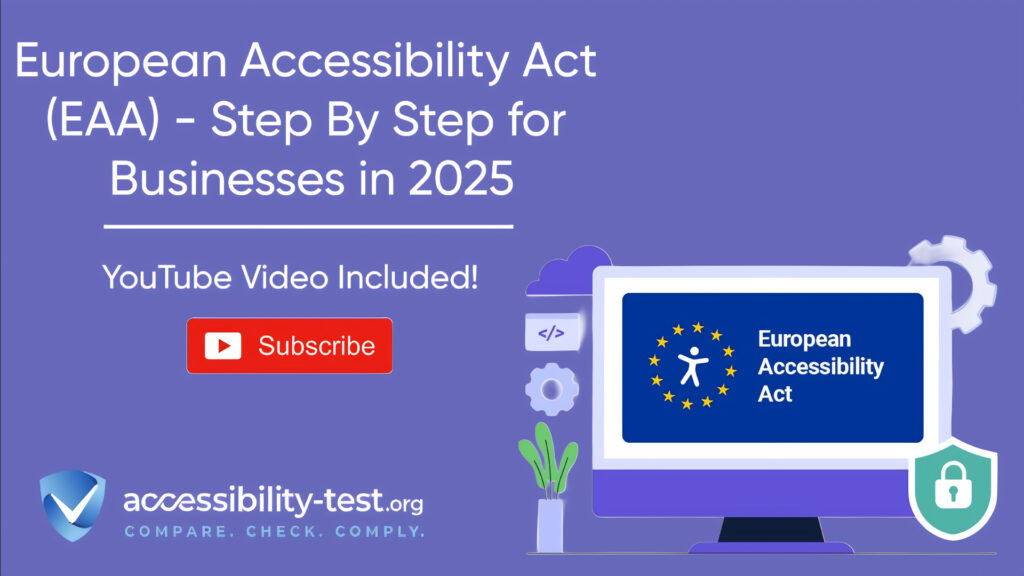
Audio Description Types and Implementation Methods
Audio descriptions provide verbal narration of important visual elements in videos, making content accessible to blind and low-vision users. These descriptions explain visual information that isn’t already conveyed through the existing audio track.
There are several approaches to implementing audio descriptions:
Standard audio descriptions insert narration into natural pauses in the original audio. This works well for content with sufficient natural breaks but can be challenging for dialogue-heavy videos.
Extended audio descriptions temporarily pause the video to allow time for more detailed descriptions. This approach works better for content with complex visual elements or limited natural pauses.
Integrated descriptions incorporate description of visual elements directly into the original script during production, eliminating the need for a separate audio track. This proactive approach often results in the most seamless experience but requires planning during content creation.
When creating audio descriptions, focus on:
- Describing essential visual information needed to understand the content
- Using clear, concise language
- Avoiding interpretation or subjective commentary
- Prioritizing critical information when time is limited
- Ensuring descriptions don’t overlap with important dialogue
For example, the search results mention an audio-described version of “The Lion King” that demonstrates effective audio description techniques. Examining such examples can help you understand best practices for your own content.
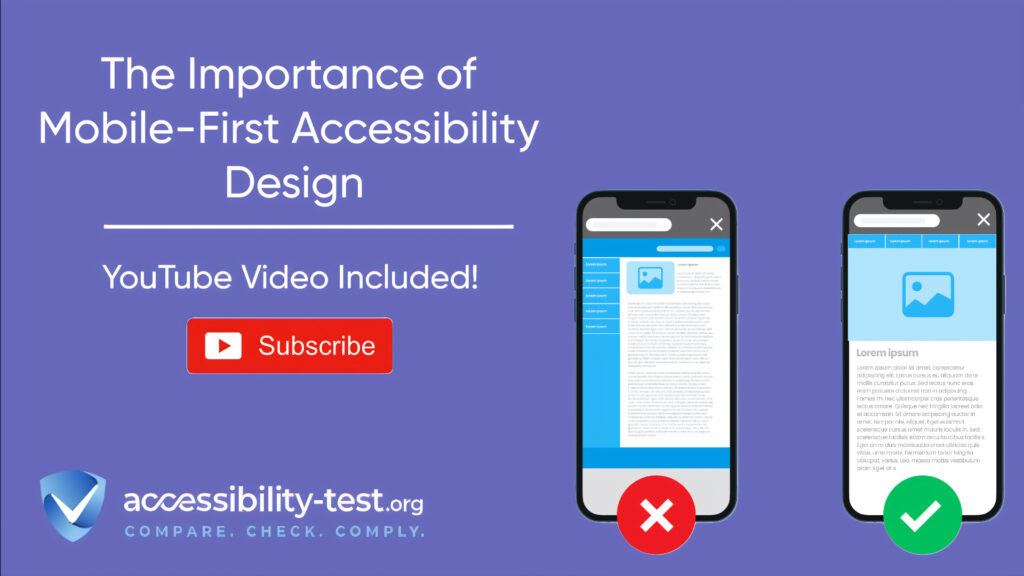
Building Accessible Media Player Experiences
The media player itself plays a crucial role in accessibility. Even perfectly captioned and described content remains inaccessible if users can’t operate the player controls. When selecting or building a media player, accessibility needs to be a core consideration rather than an afterthought.
Keyboard Accessible Media Controls
Keyboard accessibility forms the foundation of an accessible media player. Many users with motor disabilities rely entirely on keyboards or alternative input devices to navigate websites. Your media player must allow these users to access all functions without a mouse.
An accessible media player should enable users to:
- Play and pause content using keyboard shortcuts (typically Space bar)
- Adjust volume (usually with up/down arrows when player is focused)
- Navigate through the timeline (often with left/right arrows)
- Toggle captions, audio descriptions, and full-screen mode
- Access all menu options and settings
When testing keyboard accessibility, try navigating your media player using only the Tab key to move between controls and Enter to activate them. The currently focused element should be clearly visible with a high-contrast focus indicator.
A common issue occurs when custom media players trap keyboard focus, preventing users from navigating away from the player. Ensure users can tab out of the player and continue through the page normally lighter and darker variations of each. This approach allows for design flexibility while maintaining accessibility standards.
Accessible Volume and Playback Controls
Volume and playback controls deserve special attention as they represent the most frequently used media player functions. These controls must be:
- Properly labeled: Each control needs clear, descriptive text that screen readers can announce
- Sufficiently sized: Controls should be large enough to click easily, benefiting users with motor control limitations
- High contrast: Controls must stand out visually from their background
- Consistently positioned: Place controls in predictable locations across your site
For volume controls specifically, implement both a mute toggle button and a volume slider. The slider should work with keyboard arrow keys and include appropriate ARIA attributes so screen readers announce volume levels.
Playback rate controls have become increasingly important for accessibility. Many users with cognitive disabilities benefit from slowing down content, while others prefer accelerated playback. Ensure your player offers adjustable playback speeds accessible via keyboard.
Screen Reader Compatibility for Media Players
Screen reader compatibility ensures blind and low-vision users can access and control your media player. Testing with actual screen readers reveals issues that automated tools can’t detect.
When implementing a screen reader-compatible media player:
- Ensure all controls have appropriate text labels that clearly describe their function
- Use proper HTML semantics for controls (buttons for buttons, sliders for volume/progress)
- Implement appropriate ARIA roles, states, and properties where native HTML doesn’t suffice
- Test with multiple screen readers (NVDA, JAWS, VoiceOver) as they interpret code differently
According to the search results, NVDA (NonVisual Desktop Access) is a free open-source screen reader that’s particularly useful for testing. Key NVDA keyboard shortcuts for media player testing include:
- Insert+N: Open NVDA menu
- Insert+F7: List all elements by type
- Insert+Space: Toggle browse/focus modes
- Ctrl: Stop reading
During testing, pay attention to how the screen reader announces player states (playing, paused, muted) and whether it provides feedback when users adjust settings.
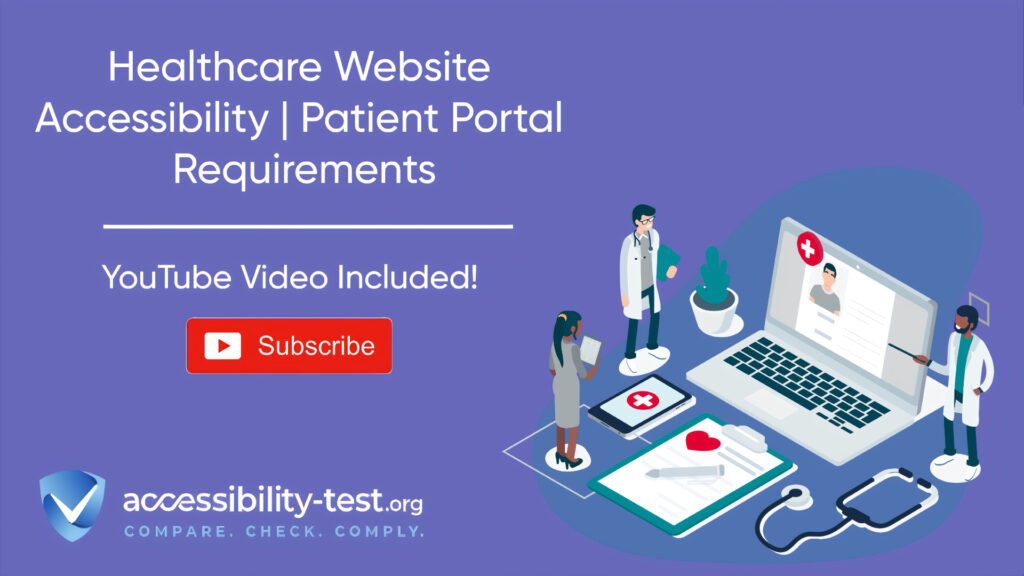
ARIA Role Implementation for Custom Players
Custom media players often rely on ARIA (Accessible Rich Internet Applications) attributes to convey information to assistive technologies. These attributes help bridge the gap when standard HTML elements don’t fully express a component’s purpose or state.
When implementing ARIA in media players:
- Use role=”application” on the player container when appropriate
- Apply aria-label to controls that lack visible text
- Implement aria-pressed for toggle buttons (play/pause, mute/unmute)
- Use aria-valuemin, aria-valuemax, and aria-valuenow for sliders
- Apply aria-live regions for dynamic content like remaining time displays
Example implementation for a play/pause button:
<button aria-label=”Play” aria-pressed=”false” id=”play-button”>
<span></span>
</button>
When the button state changes, both the aria-label and aria-pressed values should update accordingly:
<button aria-label=”Pause” aria-pressed=”true” id=”play-button”>
<span></span>
</button>
Remember that ARIA should supplement, not replace, proper HTML semantics. Always start with the most appropriate native HTML element before adding ARIA attributes.
Advanced Multimedia Accessibility Features
Beyond basic accessibility requirements, several advanced features can significantly enhance the user experience of multimedia content. These features benefit not only users with disabilities but also improve usability for everyone.
Interactive Transcripts with Synchronized Highlighting
Interactive transcripts elevate the standard transcript experience by synchronizing text with media playback. As the audio plays, the corresponding text in the transcript highlights, allowing users to:
- Follow along visually while listening
- Click any point in the transcript to jump to that section of media
- Search within the transcript to find specific content
- Access content in their preferred format (text or audio/video)
Implementing interactive transcripts involves:
- Creating an accurate transcript with proper time codes
- Building the technical functionality to sync transcript segments with media timestamps
- Styling the transcript for readability and clear visual highlighting
- Ensuring the interactive elements are keyboard accessible
For educational platforms and Learning Management Systems (LMS), interactive transcripts provide particular benefits. Students can easily review specific sections, search for key terms, and engage with content according to their learning preferences. Research shows this flexibility improves information retention and learning outcomes.
Several technical approaches exist for implementation:
- JavaScript-based solutions that sync with HTML5 media events
- Media player APIs that offer built-in transcript functionality
- Third-party services that provide ready-made interactive transcript widgets
When designing the user interface for interactive transcripts, place the transcript adjacent to the media player when space allows. On smaller screens, a toggle option to show/hide the transcript maintains usability without cluttering the interface.
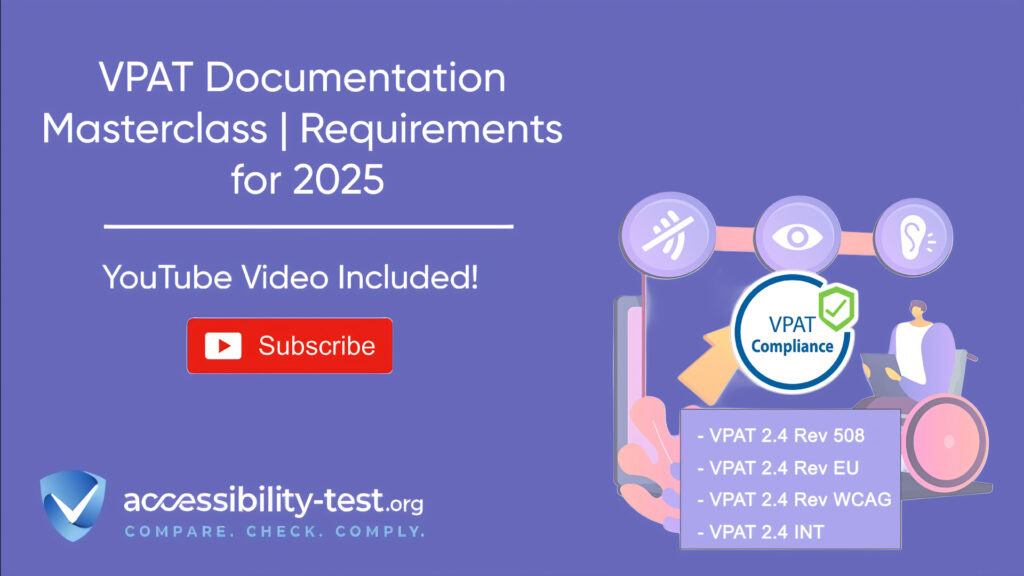
Multi-Language Support for Accessible Media
In our increasingly global digital environment, supporting multiple languages enhances accessibility for diverse users. Multi-language support for multimedia involves several components:
Multi-language captions and subtitles: Provide captions in multiple languages to serve both deaf/hard-of-hearing users and those who speak different languages. Users should be able to select their preferred language from a menu within the media player.
Translated transcripts: Offer complete transcripts in multiple languages, either through separate transcript files or a language selector within a single transcript interface.
Localized audio descriptions: For video content with audio descriptions, consider providing these descriptions in multiple languages to serve international blind and low-vision users.
Interface localization: Ensure the media player controls and settings are translated consistently with the selected content language.
Implementing multi-language support requires careful planning:
- Structure your codebase to separate content from presentation
- Use standard formats like WebVTT for captions that support language tags
- Implement proper lang attributes in HTML to help screen readers use correct pronunciation
- Consider the reading direction (left-to-right vs. right-to-left) for languages like Arabic and Hebrew
Modern media players like AblePlayer and Accessible JW Player offer built-in support for multilingual captions, simplifying implementation. These players allow users to switch languages through accessible dropdown menus without disrupting playback.
Testing Multimedia Accessibility Implementation
Creating accessible multimedia requires thorough testing to verify that your implementation works as intended across different devices, browsers, and assistive technologies.
Automated Testing Tools for Multimedia
Automated testing provides a quick first pass to identify common accessibility issues. Several tools can help evaluate multimedia accessibility:
- WAVE: Checks for the presence of captions and transcripts
- Accessibility-Test.org Scanner: Evaluates media player accessibility and identifies missing text alternatives
- HTML Validator: Ensures your markup is valid, which is essential for proper assistive technology interaction
However, automated tools have significant limitations. According to GDS accessibility research, even the best tools only catch around 40% of accessibility issues. They can verify the presence of certain features but can’t evaluate the quality of captions or audio descriptions.
For example, an automated tool might confirm that a video has captions but can’t determine if those captions accurately represent the audio content or include important non-speech information like [door slams] or [phone rings].
Manual Testing Protocols with Screen Readers
Manual testing with screen readers reveals how users actually experience your multimedia content. Effective screen reader testing requires a structured approach:
- Set up testing environments: Install and configure screen readers like NVDA, JAWS, and VoiceOver
- Create test scenarios: Develop specific tasks that cover all multimedia functionality
- Document findings: Record both objective results and subjective experiences
Example test scenarios should include:
- Playing and pausing media
- Adjusting volume
- Navigating to specific points in the timeline
- Toggling captions and audio descriptions
- Accessing and interacting with transcripts
When testing with NVDA (a free, open-source screen reader), pay attention to:
- How the player announces its controls
- Whether state changes (like play/pause) are properly communicated
- If the transcript is accessible and navigable
- Whether focus management works correctly when operating controls
Testing with actual users who rely on assistive technology provides the most valuable insights. Consider recruiting participants with different disabilities to evaluate your multimedia implementation from various perspectives.
Accessibility for Learning Management Systems and Educational Content
Educational platforms face unique multimedia accessibility challenges. The diverse content types, interactive elements, and assessment tools common in Learning Management Systems (LMS) require special consideration.
Making Course Videos and Audio Lectures Accessible
Educational videos and lectures often contain complex visual information, technical terminology, and detailed explanations that require careful handling for accessibility.
For course videos:
- Ensure accurate captions: Academic content often includes specialized terminology, equations, and technical language that requires expert captioning
- Provide descriptive transcripts: Include descriptions of visual demonstrations, charts, and other visual teaching aids
- Create quality audio descriptions: Describe visual teaching elements like diagrams, demonstrations, and whiteboard content
- Consider cognitive accessibility: Some students benefit from slowing playback speed or breaking long videos into shorter segments
For audio lectures:
Link to supplementary materials: Ensure references to visual materials are clearly connected in the transcript
Supply complete transcripts: Include speaker identification and reflect the lecture structure with proper headings
Format mathematical content accessibly: Use MathML rather than images of equations when possible
Quiz and Interactive Media Accessibility
Interactive educational elements like quizzes, simulations, and interactive diagrams present additional accessibility challenges:
- Make quiz interfaces screen reader compatible: Ensure questions, answer options, and feedback are properly labeled
- Provide keyboard access to all interactive elements: Students should be able to complete quizzes without a mouse
- Allow flexible timing: Offer extended time options for students who need them
- Ensure error messages are clear and accessible: Help students understand and correct mistakes
For more complex simulations and interactive media:
- Provide alternative ways to access the information: Text descriptions or guided versions for complex interactions
- Ensure all feedback is accessible: Both visual and audio feedback should have alternatives
- Test with assistive technologies: Verify that interactive elements work with screen readers and keyboard navigation
Educational platforms should use specific student personas when testing, such as:
- Jamie: A blind student using JAWS screen reader and keyboard navigation
- Alex: A student with ADHD who benefits from clear structure
- Morgan: A student with motor limitations using voice recognition software
- Taylor: A deaf student who relies on captions and visual information
Implementation Case Studies
Learning from real-world examples helps clarify how these accessibility principles apply in practice. Let’s examine two case studies of successful multimedia accessibility implementation.
University Course Platform Accessibility Upgrade
A large university faced a complaint about inaccessible course videos. Their accessibility team implemented the following solutions:
- Caption workflow improvement: Established a process where videos were automatically sent for professional captioning before publication
- Media player upgrade: Replaced their standard player with AblePlayer, which offers robust accessibility features
- Interactive transcript integration: Added synchronized transcripts next to video content
- Faculty training: Developed guidelines for creating inherently more accessible video content
- Testing protocol: Established regular screen reader testing of their multimedia content
The results showed significant improvements:
- 98% of videos were properly captioned within 24 hours of upload
- Student satisfaction scores increased across all demographics
- The number of accommodation requests decreased
- Several non-disabled students reported using the transcripts for study purposes
This case demonstrates how systematic changes to both technology and processes can transform multimedia accessibility.
News Website Audio Description Implementation
A major news website sought to make their video content accessible to blind and low-vision users. They took these steps:
- Prioritization system: Developed criteria to identify which videos most needed audio descriptions
- Template approach: Created standardized language for common video elements to streamline description creation
- Technology selection: Implemented a player that supported multiple audio tracks
- User testing: Recruited blind users to evaluate the effectiveness of their descriptions
Their approach to audio descriptions balanced practicality with quality:
- Breaking news videos received quick, essential descriptions
- Feature stories and documentaries received more detailed descriptions
- For some content, they rewrote scripts to incorporate visual information directly
- They measured success through user feedback rather than just technical compliance
Both case studies highlight the importance of thoughtful implementation strategies that consider real user needs rather than just checking compliance boxes.
Future of Multimedia Accessibility
As technology evolves, new opportunities and challenges for multimedia accessibility continue to emerge. Understanding these trends helps organizations prepare for future needs.
Emerging Technologies and Accessibility
Several emerging technologies show promise for enhancing multimedia accessibility:
Artificial Intelligence for Captioning and Descriptions: AI-powered tools increasingly help generate captions and even basic audio descriptions. While these tools continue to improve, they still require human review for accuracy, especially for specialized content.
Virtual Reality and 360° Video Accessibility: As immersive media becomes more common, new accessibility challenges arise. Ongoing work focuses on making spatial audio, interactive elements, and visual experiences accessible to users with disabilities.
Automated Personalization: Future systems may automatically tailor multimedia experiences to individual user preferences and needs, providing appropriate accessibility features without requiring manual selection.
Real-time Translation: Advances in machine translation are improving multilingual accessibility, potentially allowing simultaneous translation of captions and transcripts across multiple languages.
These technologies offer exciting possibilities but also require careful implementation to ensure they truly enhance rather than complicate accessibility.
Using Automated Tools for Quick Insights (Accessibility-Test.org Scanner)
Automated testing tools provide a fast way to identify many common accessibility issues. They can quickly scan your website and point out problems that might be difficult for people with disabilities to overcome.
Visit Our Tools Comparison Page!

Run a FREE scan to check compliance and get recommendations to reduce risks of lawsuits
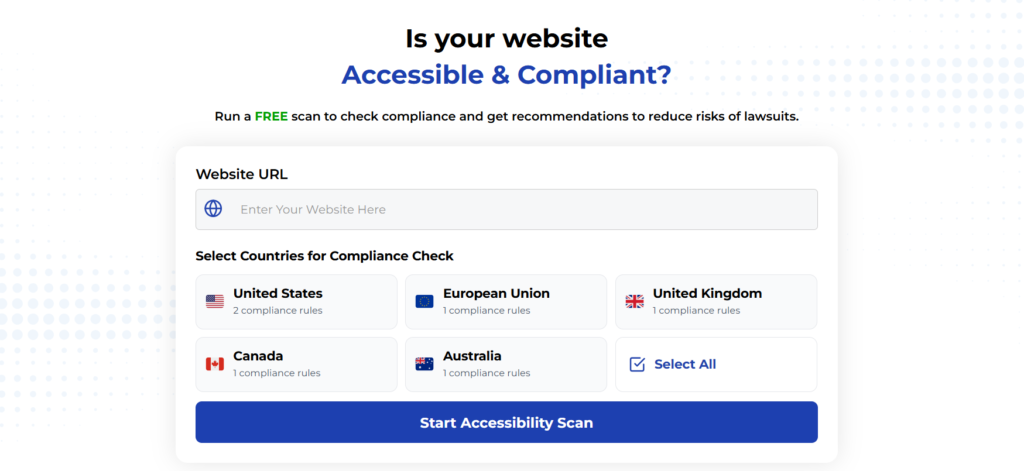
Multimedia accessibility extends far beyond basic captions and transcripts. By implementing audio descriptions, accessible media players, interactive transcripts, and multilingual support, you create truly inclusive experiences that benefit all users.
Remember that accessibility is an ongoing process rather than a one-time project. Regular testing, updating content as standards evolve, and collecting user feedback are essential parts of maintaining accessibility over time.
The effort invested in multimedia accessibility pays dividends in increased audience reach, improved user satisfaction, and reduced legal risk. Most importantly, it fulfills the fundamental promise of the web: information access for everyone.
Ready to evaluate your website’s multimedia accessibility? Run a FREE scan to check compliance and get recommendations to reduce risks of lawsuits.



